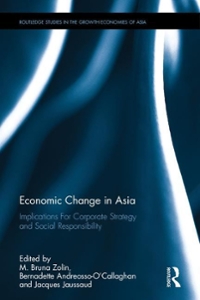Question
QUESTION 11 In a competitive industry: A all firms will earn above-normal profits if demand is high. B the opportunity cost of production is zero.
QUESTION 11
- In a competitive industry:
| A | all firms will earn above-normal profits if demand is high. | |
| B | the opportunity cost of production is zero. | |
| C | profits are only attainable in the long run to those firms able to innovate at the lowest cost. | |
| D | resources move across firms in such a way that the total value of production is maximized. |
1 points
QUESTION 12
- Which one would NOT be considered a network good?
| A | cell phones | |
| B | quiet study rooms | |
| C | messaging apps on smartphones | |
| D | online player-versus-player games |
1 points
QUESTION 13
- Entrepreneurs have the incentive to:
| A | follow the orders of the central planner. | |
| B | move resources into those industries with the lowest marginal costs. | |
| C | minimize marginal costs. | |
| D | move resources out of low-value industries and into high-value industries. |
1 points
QUESTION 14
- A perfectly competitive firm with lower marginal costs will produce _____ a competitor with higher marginal costs.
| A | more units than | |
| B | fewer units than | |
| C | the same number of units as | |
| D | higher-quality units than |
1 points
QUESTION 15
- Firms in a perfectly competitive industry maximize profits by:
| A | eliminating the competition. | |
| B | producing a higher-quality good and setting a price higher than the competition. | |
| C | setting a price equal to the market price. | |
| D | setting a price less than the market price and undercutting the competition. |
1 points
QUESTION 16
- Which one would NOT be considered a network good?
| A | Match, the online dating service | |
| B | Microsoft Word | |
| C | Fortnite, the online video game | |
| D | McDonald's hamburgers |
1 points
QUESTION 17
- In a competitive industry, if the marginal cost of factory 1 is higher than that of factory 2, in the short run:
| A | both factories are producing too much. | |
| B | either factory 1 is producing too much or factory 2 is producing too little, or both. | |
| C | either factory 1 is producing too little or factory 2 is producing too much, or both. | |
| D | both factories are producing too little. |
1 points
QUESTION 18
- A competitive firm maximizes profit when marginal cost:
| A | equals the price. | |
| B | is less than the price. | |
| C | is greater than the price. | |
| D | is minimized. |
1 points
QUESTION 19
- In 2011, Google introduced its social networking site, Google+. Even though Google+ was cleaner and more straightforward than its nearest competitor, Facebook, it still had trouble competing with Facebook because:
| A | most people don't know about it. | |
| B | Facebook has a monopoly on social networking. | |
| C | everyone's already on Facebook. | |
| D | the market is still contestable. |
1 points
QUESTION 20
- In April 2011, the European Commission fined Procter & Gamble and Unilever 315 million euros for fixing the price of laundry detergent in eight European countries. They admitted to this cartel, which resulted in a 10% discount in the fines. The 3-year investigation started because of a tip-off by another competitor, Henkel, which was also part of the price-fixing scheme. Henkel received no fine because of its cooperation with investigators. Besides imposing fines, how did investigators make maintaining this cartel difficult to continue?
| A | by offering a 10% discount on the fine if the parties admitted to wrongdoing | |
| B | by investigating the cartel for 3 years so they could prosecute | |
| C | by reminding consumers that laundry detergent has a lot of long-run substitutes | |
| D | by waiving the fine for just Henkel, which encouraged Henkel to cheat |
Step by Step Solution
There are 3 Steps involved in it
Step: 1

Get Instant Access to Expert-Tailored Solutions
See step-by-step solutions with expert insights and AI powered tools for academic success
Step: 2

Step: 3

Ace Your Homework with AI
Get the answers you need in no time with our AI-driven, step-by-step assistance
Get Started


